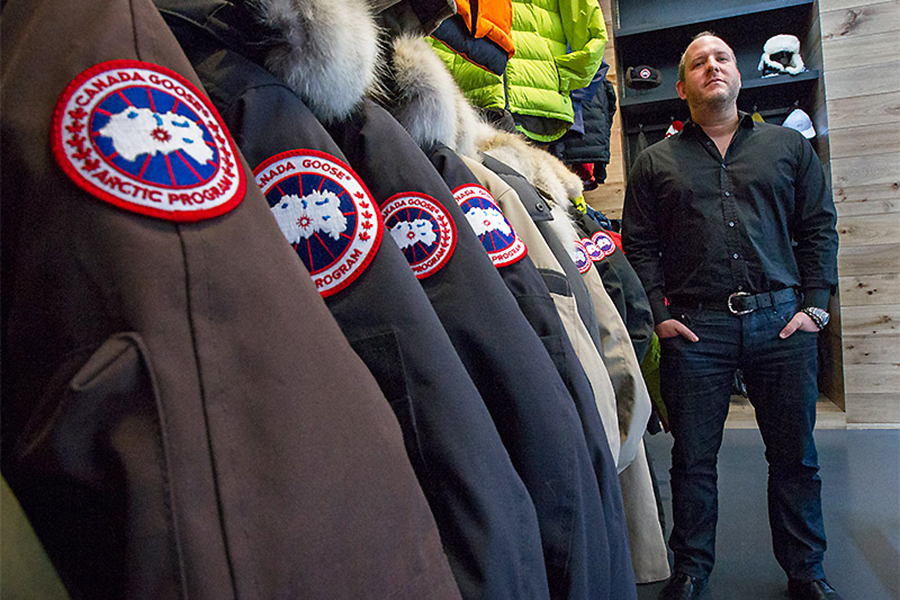By Eric Smith
<span style="color: #ababab;">Before Canada Goose Holdings Inc. CEO Dani Reiss addressed the disruption that the coronavirus is having on supply chain, sourcing and sales in China, he expressed concerns over those being affected by the pandemic and announced the company’s commitment to helping.
It’s become a common refrain from the leaders of companies whose businesses are starting to suffer—which is to say almost every brand in the active lifestyle space.
“First and foremost, our hearts go out to everyone who has been affected, and we stand together with everyone in China and the rest of the world in addressing this health crisis,” Reiss said on Friday’s earnings call with analysts. “To that end, we have made an RMB1 million (US$0.1 million) contribution to the Wuhan Charity Federation, and we hope that our humble contribution can be of help to swiftly win this battle. The health and safety of our team in Greater China is our top priority, and we are closely watching the situation and adjusting our operations as needed in cooperation with the local authorities.”
He then went on to outline how the coronavirus is drastically affecting Canada Goose and will hit the company’s next quarterly report.
“As it is to everyone in the luxury industry, this is obviously a major near term headwind,” Reiss told analysts. “Understandably, people are staying home and avoiding shopping for their own health and safety in China and abroad. So we’re seeing impact in our stores, and on TMall in China, and also in stores located in major international shopping destinations in Europe, and North America, due to extensive flight cancellations and travel restrictions.”
That near-term headwind will wreak havoc on Canada Goose’s fiscal fourth quarter, which ends March 29, and, of course, on its fiscal year. The company last week updated its guidance for the quarter and year and now expects the following (all dollar amounts in Canadian currency):
- Annual revenue growth of 13.8 percent to 15 percent implying revenue of $945 million to $955 million, compared to at least 20 percent;
- Adjusted EBIT margin contraction of 330 basis points to 280 basis points implying adjusted EBIT margin of 21.6 percent to 22.1 percent, compared to the expansion of at least 40 basis points; and
- Annual growth (decline) in adjusted net income per diluted share of (2.2) percent to 0.7 percent implying adjusted net income per diluted share of $1.33 to $1.37, compared to at least 25 percent.
Those reductions came after a solid quarter in which the company reported results that slightly topped analysts’ estimates.
Total revenue of $452.1 million increased by 13.2 percent, or 13.7 percent on a constant-currency basis. The consensus revenue estimate had been $448.18 million.
Net income was $118 million, or $1.07 per diluted share, compared to $103.4 million, or $0.93 per diluted share. Adjusted net income was $119.7 million, or $1.08 per diluted share, compared to adjusted net income of $107.2 million, or $0.96 per diluted share. The consensus EPS estimate had been $1.07.
Click here to read more about Canada Goose’s fiscal third-quarter earnings.

Despite the reduction in guidance, Reiss was adamant that “this is a temporary disruption,” he said. “Nothing about the situation impacts our fundamentals and our future growth potential remains intact. We know it will pass with time and we believe, we have the financial and brand strength to ride it out with confidence.”
The company believes its supply chain is insulated from the worst of the coronavirus impacts thanks to a “buffer inventory” that the company built over the last year.
“Unlike many other manufacturers, our current finished goods inventory gives us high confidence in our ability to fully satisfy demand for next year,” Reiss said. “We’ve built an incredible business in Greater China in a short time, and we are ready to continue our rapid expansion there as soon as this is over. In closing, I believe, I deeply believe in our long-term potential and our strategy to get there. We continue to work diligently on our product extension plans, our brand is strong, and we have a solid position in all of our key markets. We already commanded the things that we can control, and we have the strength to navigate the things that we can’t.”
Analyst reaction was mostly positive given Canada Goose’s supply chain and sourcing mitigation tactics, agreeing with Reiss’s assessment that disruption is temporary. After all, the company’s shares (GOOS) dipped only slightly on Friday after being down low-double digits in pre-market trading.
“We were encouraged to see GOOS only fall modestly after cutting EPS estimates >20% on coronavirus,” Jon Komp of Baird wrote in a note to investors. “While the report did not resolve several bear arguments/concerns, getting past the estimate reset is an important step, and we see potential for the intensity surrounding several debates to lessen during F2021. With GOOS trading near luxury brand peers on the lowered estimates (with better long-term growth) we see relatively limited one-year out downside, while shares could double if GOOS returns to its longer-term algorithm and recaptures lost China/Hong Kong contribution.”
And Sam Poser of Susquehanna Financial Group LLLP said the firm agrees with Canada Goose’s management that “the negative impact from the coronavirus is transient and not a structural headwind. GOOS’ long-term growth prospects remain intact. Canada Goose’s brand heat has not waned and we expect a significant snap back in demand once the impact of the coronavirus dissipates.”
Photo courtesy Canada Goose
















